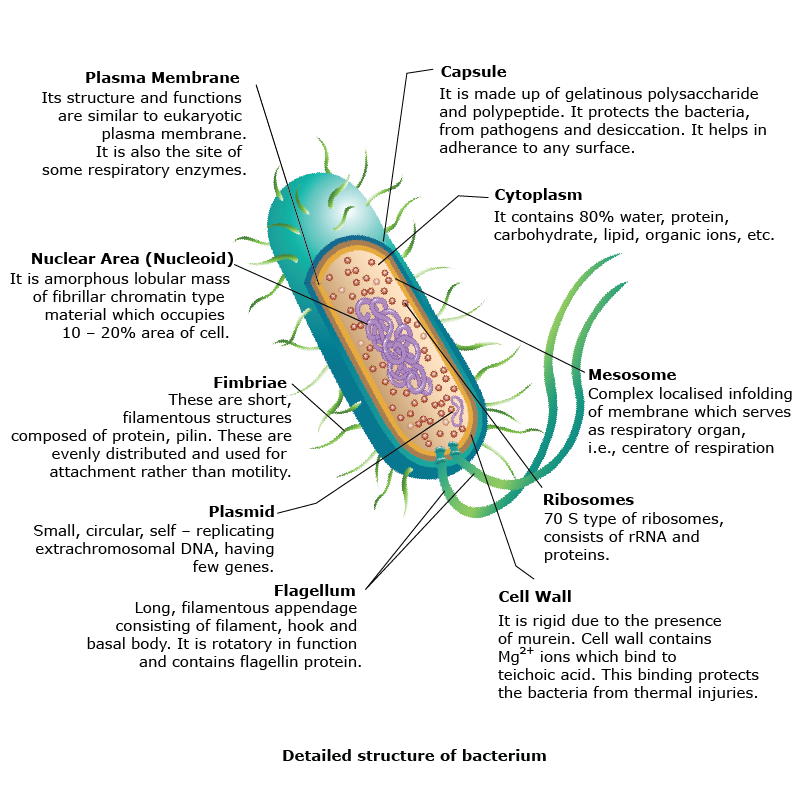Summary
Key concepts
- Six kingdom of Woese based on recent recent nucleic acid hybridization
- DNA sequencing method
- Comparing base sequence of 16S rRNA from variety of organism
- Woese, Kandler, Wheelis proposed bacteria should be divided into archaebacteria and eubacteria on the basis of 16S rRNA base sequence
- Domain: (i) Taxonomic categories above the rank of kingdom on the basis of 16S rRNA gene sequence called Domain

- Topic – Moera

- Topic – Moera

- Topic – Protista

- Topic – Fungi

- Topic – Fungi

- Topic – Plantae

- Topic – Viruses, Viroids
- Viruses and Viroids
- 1. Viruses
The term 'Virus' means poisonous fluid. The word was coined by Louis Pasteur. Viruses are very small (0.05 – 0.2 µm), infective, nucleoprotein particles, which can be called as living because of the presence of nucleic acid as genetic material and ability to produce their own copy – viruses. They show only some properties of living beings, otherwise they behave like non – livings. Hence, these are referred to as the connecting link between living and non – living.
On the basis of nature of genetic material, the viruses are of two types
- Adenovirus DNA containing, e.g., HIV, etc.
- Retrovirus RNA containing, e.g., Rous sarcoma virus, etc.
- Animal virus (Zoophagineae), e.g., HIV, sarcoma, etc.
- Plant virus (Phytophagineae), e.g., TMV, etc.
- Bacterial viruses (Phagineae), e.g., T4 phage, etc.
- Topic – Introduction
- Six Kingdom System:
On the basis of gene sequences, six kingdom system proposed by Gray and Doolittle (1982).

- Domain System:
On the basis of genetic characters particularly genetic analysis of 16S rRNA, Carl woese proposed three domains system – Archaea, Bacteria and Eukarya.

- Topic – Monera


(v) Six kingdom classification: Most recent classification is six kingdom classification proposed by three microbiologist – Carl woese, Kandler, Wheelis
| S.No | Characters | Monera | Protista | Fungi | Plantae | Animalia |
|---|---|---|---|---|---|---|
| 1 | Complexity of organisms | Uni or Multicellular | Unicellular | Uni or Multicellular | Multicellular | Multicellular |
| 2 | Type of cell | Prokaryotic | Eukaryotic | Eukaryotic | Eukaryotic | Eukaryotic |
| 3 | Cell wall | Non cellulosic, has polysaccharides and amino acids. | Present/absent | Chitin (Fungal cellulose) | Cellulose | Absent |
| 4 | Nucleus | Incipient | Distinct & well organised | Distinct & well organised | Distinct & well organised | Distinct & well organised |
| 5 | Nutrition | Auto or heterotrophic | Auto or heterotrophic | Heterotrophic (absorptive) | Autotrophic (Photosynthetic) | Heterotrophic (ingestive) |
| 6 | True tissue system | Absent | Absent | Absent | Present | Present |
| 7 | Motility | Present/absent, 9 + 2 organisation is absent in flagella | Present, Flagella show 9 + 2 arrangement. | Present/absent, Flagella show 9 + 2 arrangement. | Present/absent, Flagella show 9 + 2 arrangement. | Present, Flagella show 9 + 2 arrangement. |
| 8 | Reproduction | Sexual reproduction absent | Sexual reproduction takes place, Melosis is zygotic or gametic. | Sexual reproduction takes place, Melosis is zygotic. | Sexual reproduction takes place, Melosis is zygotic or sporic. | Sexual reproduction takes place, Melosis is gametic. |
| 9 | Ecological role | Producers/decomposers. | Producers/decomposers/consumers. | Decomposers. | Producers. | Consumers. |


